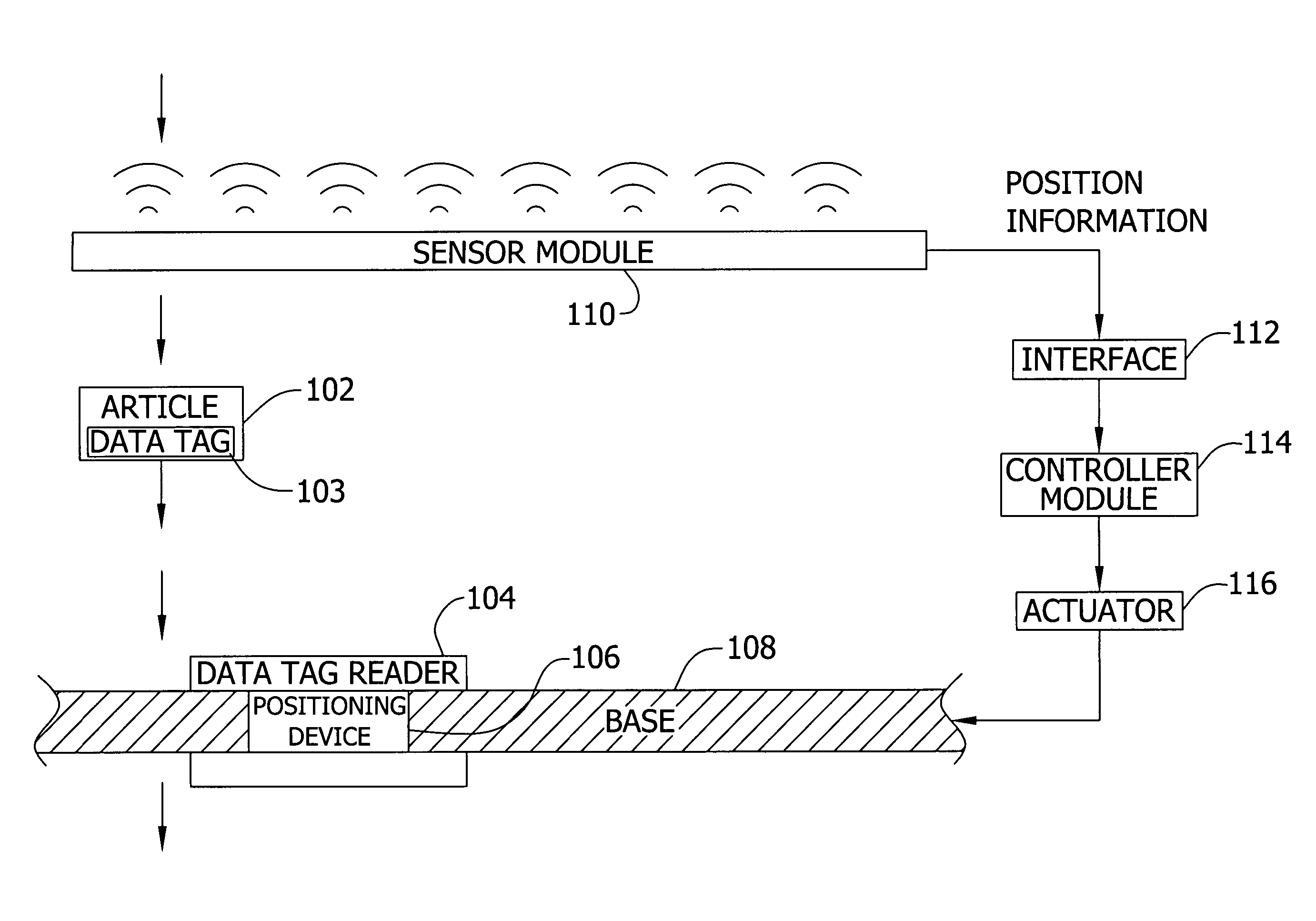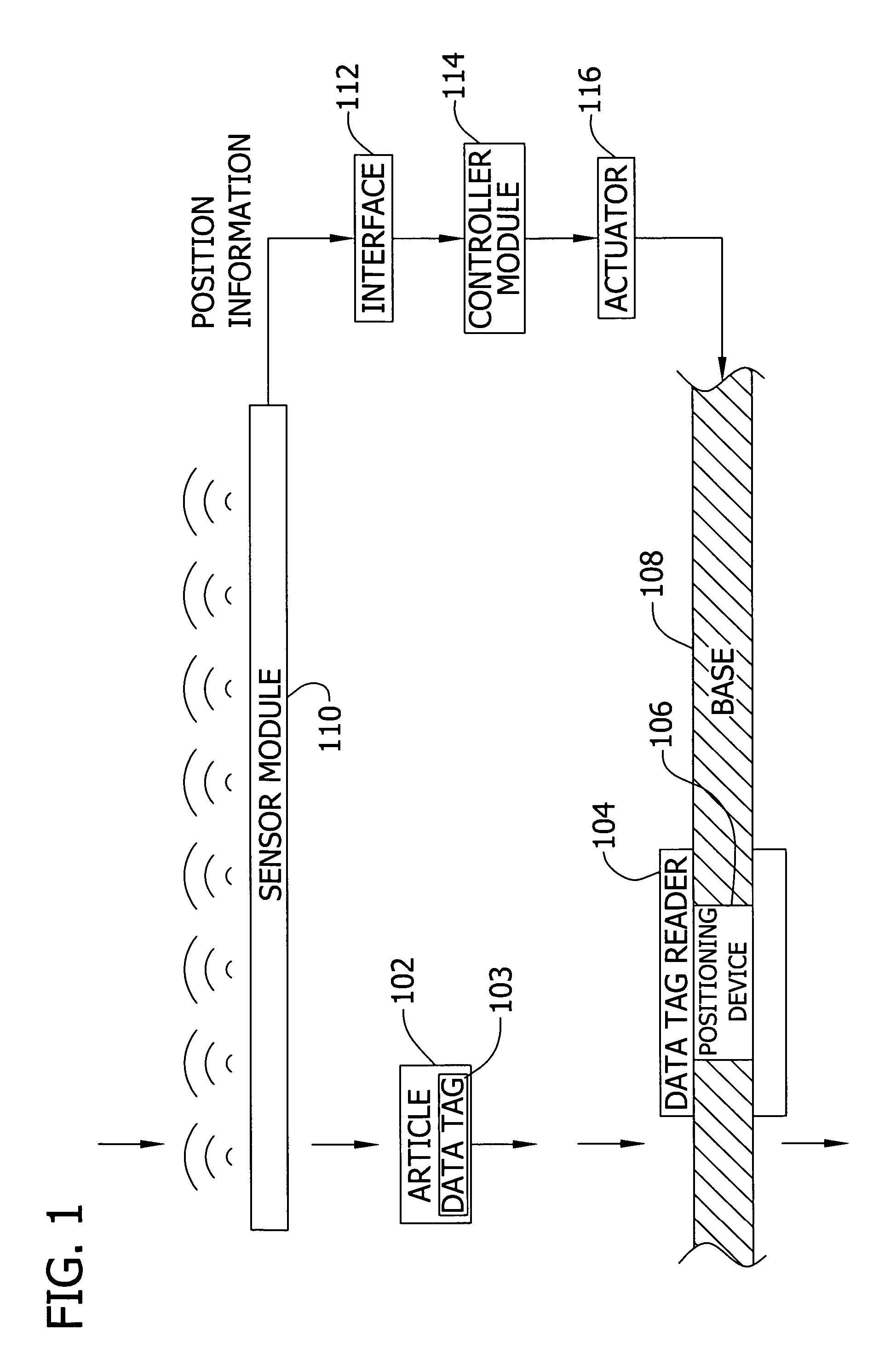Self-adjusting portals with movable data tag readers for improved reading of data tags
a technology of data tags and readers, applied in the field of article identification and tracking, can solve the problems of different materials not being read properly, and the tag location is not optimized for reading, so as to improve reading, and improve the readability of data tags
- Summary
- Abstract
- Description
- Claims
- Application Information
AI Technical Summary
Benefits of technology
Problems solved by technology
Method used
Image
Examples
Embodiment Construction
[0020]A data tag, smart tag, or other identification means (e.g., a bar code) may be placed by hand or by machinery on an article. The data tag may be placed inside or outside of the article. The data tag stores identification information. In one embodiment, the information in the tag is used to assist in routing of the article in the manufacturing process. The data tag reader interrogates a data tag affixed to an article. The invention is operable with any form of data tag including, but not limited to, a smart tag and an active or passive radio frequency identification (RFID) tag.
[0021]Embodiments of the invention include a self-adjusting portal with movable data tag readers for improved reading of data tags on an article. For example, if a transporting device such as a forklift is carrying the article, and the location of the forklift as it approaches a portal is determined to be near the left side of the portal, a moveable reader on an upper beam of the portal may slide to the l...
PUM
 Login to View More
Login to View More Abstract
Description
Claims
Application Information
 Login to View More
Login to View More - R&D
- Intellectual Property
- Life Sciences
- Materials
- Tech Scout
- Unparalleled Data Quality
- Higher Quality Content
- 60% Fewer Hallucinations
Browse by: Latest US Patents, China's latest patents, Technical Efficacy Thesaurus, Application Domain, Technology Topic, Popular Technical Reports.
© 2025 PatSnap. All rights reserved.Legal|Privacy policy|Modern Slavery Act Transparency Statement|Sitemap|About US| Contact US: help@patsnap.com



